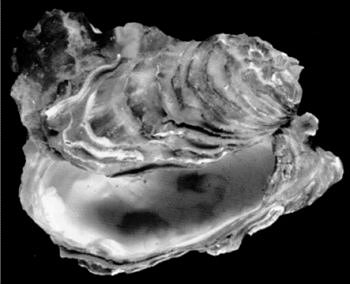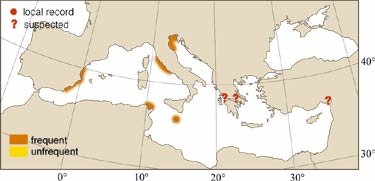
|
Relevant Synonyms
Misidentification
|
|
| photo: S. Gofas |
|
SHORT
DESCRIPTION
color :
shell white with purple patches.
common size :
80-300 mm in length: exceptional specimens can attain 400 mm. |
DISTINGUISHING CHARACTERISTICS
BIOLOGY / ECOLOGY
habitat :
prefers shallow water. On muddy as well as on rocky bottoms in sheltered areas, rarely on exposed shores. Extremely large shells are usually dredged at depths between 20 and 40 m. |
|
1st
Mediterranean record
|

|
|
DISTRIBUTION
|
ESTABLISHMENT SUCCESS
speculated reasons for success :
|
|
|
MODE OF
INTRODUCTION |
IMPORTANCE TO
HUMANS |
|
KEY
REFERENCES
|
|
|
 Crassostrea angulata (Lamarck, 1819) [Menzel, 1974]
Crassostrea angulata (Lamarck, 1819) [Menzel, 1974]